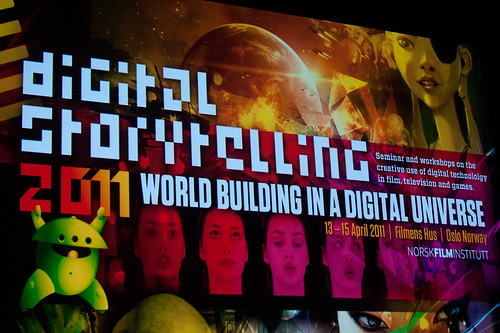La Clase Española
Discoveries, thoughts, and reflections on technology and foreign language instruction from a beginning teacher.
Monday, April 23, 2012
Podcasting for the classroom
Podcasts can be a great way to introduce authentic accents, pronunciation, and content in the Spanish classroom. Español Podcast is one of a great resource for this very practice. This website has fabulous podcasts, pictures, vocabulary explanations, and a blog. I found this particular podcast, Platos españoles, very interesting. I could use clips of this in the classroom when teaching food vocabulary or when doing a unit on traditional dishes from various Spanish speaking countries. The women are both Spanish and are talking about the gastronomy of the different regions of Spain. This podcast could be used as a listening activity, students could hear a Barcelona Spanish accent, a reading activity, students could focus on the different types of food by region, or to learn and practice food vocabulary. This is a great resource!
Saturday, April 14, 2012

I really enjoyed exploring the Epals website. There are tons of great opportunities available on the site. I liked that I was able to find classrooms in specific countries. This would be helpful when studying specific countries and enable my class to make authentic comparisons. I also appreciate the projects that teachers share on this website. It's neat to see what other classrooms are doing and the ability to join them or replicate their activities in my own classroom. The storytelling component on Epals could be a really awesome way to give my students a wide audience to share stories they've written in Spanish. They could probably get tips in the writing process and produce an even better end product. Epals is a great website and definitely one that has many applications in the Spanish classroom.
Monday, April 9, 2012
Educational Voicethreads
I think the best class Voicethread was Descriptive Writing created by Alyssa Pantano. This is a great educational Voicethread because it uses the tool in an effective way, to have students collaborate and see examples from each other of how to make writing more descriptive. I enjoyed the variety of creative prompts and think they are well suited for a classroom.
I also think Emily Galus' Voicethread Espanol was a good educational tool. I like this one because it has students practicing pronunciation and spelling of vocabulary words. This would be a good tool to use on a consistent basis as a formative assessment. Students could do it at home or during study halls at the school and practice their Spanish additionally. It might be helpful to have the teacher pronounce all the words correctly first so the students can hear and practice the correct pronunciation.
I also think Emily Galus' Voicethread Espanol was a good educational tool. I like this one because it has students practicing pronunciation and spelling of vocabulary words. This would be a good tool to use on a consistent basis as a formative assessment. Students could do it at home or during study halls at the school and practice their Spanish additionally. It might be helpful to have the teacher pronounce all the words correctly first so the students can hear and practice the correct pronunciation.
Saturday, April 7, 2012
Stupeflix and Digital Storytelling in the Classroom
This show is a compilation of my own pictures from my study abroad experience in Spain. I would definitely use this in my classes to show my students architecture, historic places, and culture of Spain. I love that I can include images of maps to also distinguish the particular cities in which the pictures were taken. Although Stupeflix only offers one free video and the rest are created through a paid subscription, I think I would pay to use this particular program because of its ease and simplicity. It's only $5 a month. However, if I had my students create presentations, I could use a free program like Flixtime. It was a little more tedious uploading pictures using this program, but overall would be great for students. I could use this digital storytelling for country or culture projects. It would also be interesting to have students create an advertisement using one of these programs. With other programs text can probably be added, and that would enable the use of such a program for stories, movies with subtitles, etc.
Saturday, March 31, 2012
Bookr and Flickr
Bookr is a pretty simple way to illustrate a story or poem. I chose to use it with the poem Acuarela by Clarisa Ruiz because the poem is short and its very nature demands images. It was a fun way to make the meaning accessible in multiple ways. This is how I would like to use digital storytelling in my classroom. Since I love poetry, this would be a great way to incorporate something I enjoy into my lessons. Students will probably enjoy poetry better if they can portray it and explain it using images like this.
This would be a great way for students to practice their literacy skills, increase their vocabulary, learn about creative commons licencing and intellectual property, and use their own creative interpretations and skills to represent a Spanish poem with pictures. It would be a neat idea to have students create Flickr accounts and their own images for the books. This could even work in conjunction with their art classes. There are so many possibilities, all of which I think students would find more enjoyable then a standard reading/discussion of poetry.
Tuesday, March 27, 2012
Digital Storytelling

Photo by digistorytellin on flickr
Stories bring people together, create bonds between people, and are the essence of our memories. Sharing stories digitally is a powerful tool for archiving and connecting with people across time and generations. Digital storytelling is neat because it combines the words (recordings or text) with images, sounds, and music. It is a multidimensional way to present and remember.
Digital storytelling is a great tool for education because it causes students to create narratives "typically with a strong emotional component" ("7 things you should know about...Digital Storytelling"). Students can use this tool to present in a myriad of genres; "digital stories let students express themselves not only with their own words but also in their own voices, fostering a sense of individuality and of “owning” their creations" ("7 things you should know about...Digital Storytelling").
I enjoyed this video example of digital storytelling and the examples for use in the classroom, including documenting historical moments, retelling personal histories, exposing uncommon stories, and using the materials of this age (YouTube, etc.) to enhance the story ("The Educational Uses of Digital Storytelling"). This are all potential projects in the second language classroom. Digital storytelling would be an interesting way of documenting news headlines from throughout the school year, perhaps a culminating project of weekly current events. I can see using this as an introduction to my students (about myself), to review tenses (students retell a story from the past or create one about their futures), and to research culture. There are so many options.
I really love that this is a way for students to be creative, use the technology with which they're so familiar, and practice a practical skill: storytelling. This meaningful, authentic activity is one students will do for the rest of their lives in any language and a great skill to practice in the second language classroom.
Saturday, March 3, 2012
Twitter Possibilities
 |
| Photo link |
Twitter can be beneficial in my classroom because it will enable me to connect with other teachers and native speakers of Spanish. My students will benefit from my conversations with other teachers on methods, activities, assessments, and procedures and my conversations with natives as I improve my language use and cultural understandings.
Subscribe to:
Posts (Atom)

